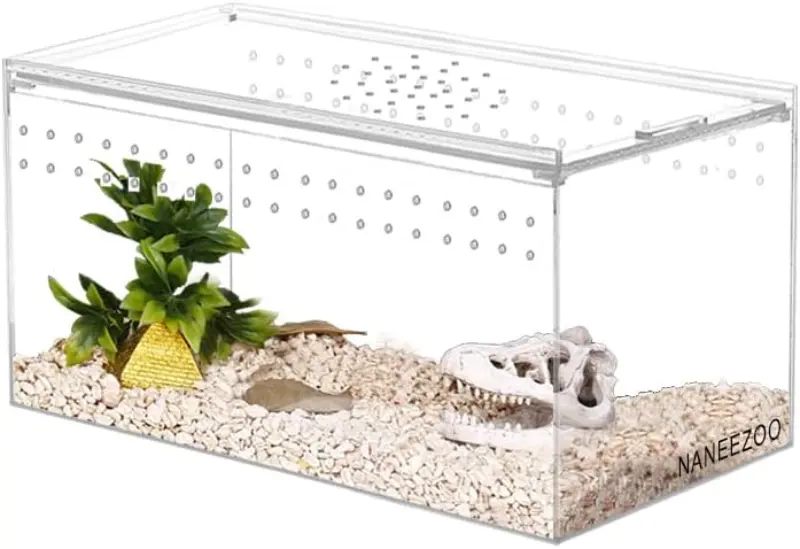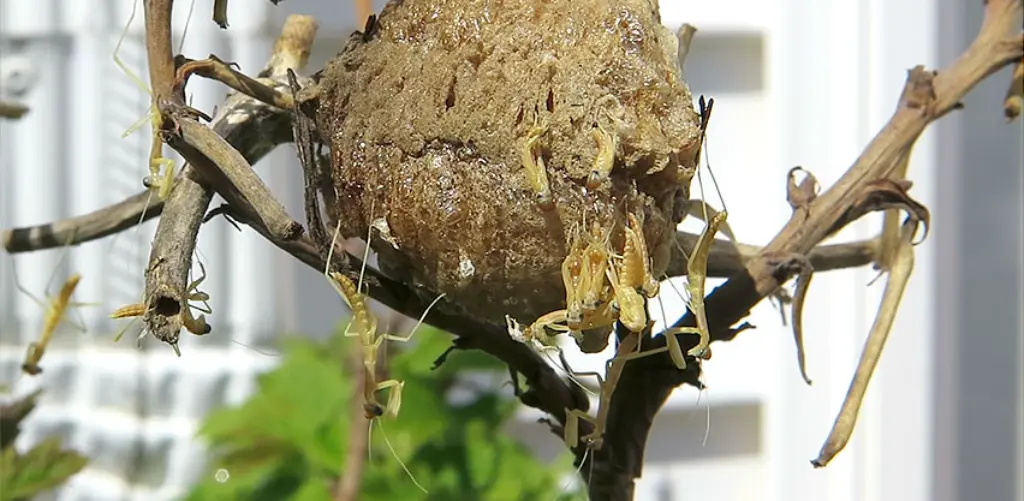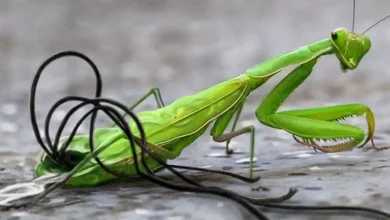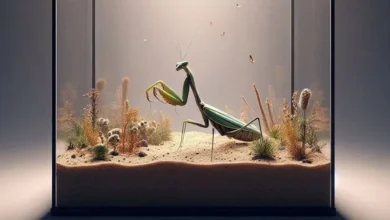Creating a suitable terrarium for your pet mantis is essential for its health, well-being, and longevity. A well-designed terrarium mimics the mantis’s natural habitat, providing the right environment for hunting, molting, and breeding.
This guide will walk you through the process of designing and maintaining a terrarium, including choosing the right enclosure, setting up the habitat, and ensuring proper care.
Introduction to Mantis Terrariums

Praying mantises are fascinating and low-maintenance pets, but providing them with the right environment is key to their health and happiness. A well-designed terrarium replicates the mantis’s natural habitat, offering space for hunting, molting, and other natural behaviors.
Whether you’re keeping a small mantis species or a larger one, designing a suitable terrarium involves careful consideration of the mantis’s needs and environmental requirements.
Choosing the Right Enclosure
The first step in setting up a terrarium for your mantis is choosing the right enclosure. The size, material, and design of the enclosure will affect how comfortable and secure your mantis feels.
Size and Dimensions
The size of the terrarium depends on the species of mantis you are keeping. A general rule is that the enclosure should be at least three times the length of the mantis in height and two times in width.
- Small Mantises (e.g., Ghost Mantis): A smaller enclosure, such as 8″x8″x12″ (20x20x30 cm), is suitable for species like the Ghost Mantis.
- Medium Mantises (e.g., Chinese Mantis): For medium-sized species, an enclosure around 12″x12″x18″ (30x30x45 cm) is appropriate.
- Large Mantises (e.g., Giant Asian Mantis): Larger species require more space, with enclosures around 18″x18″x24″ (45x45x60 cm) or bigger.

Material and Ventilation
The material of the enclosure should be durable and provide adequate ventilation to maintain air quality and prevent mold growth.
- Glass Terrariums: Glass enclosures are popular for mantises due to their visibility and durability. They are easy to clean and provide a clear view of your pet.
- Plastic Terrariums: Plastic enclosures are lightweight and often come with built-in ventilation. They are also more affordable than glass terrariums.
- Mesh Cages: Mesh or screen enclosures offer excellent ventilation but may not retain humidity as well as glass or plastic. These are ideal for species that require less humidity.
Access and Security
Ensure that the enclosure has secure access points for feeding, cleaning, and handling your mantis.
- Front-Opening Doors: Front-opening enclosures are convenient for access without disturbing the substrate or decorations.
- Lid Security: The lid should fit securely to prevent escapes. Mesh lids are ideal for maintaining airflow while keeping your mantis safely inside.
- Locking Mechanisms: If the enclosure has doors or lids, ensure they can be securely locked to prevent accidental openings.
Setting Up the Terrarium
Once you have chosen the enclosure, the next step is to set up the habitat inside the terrarium. This involves selecting the right substrate, adding plants and decorations, and providing structures for climbing and molting.
Substrate Selection
The substrate forms the base of the terrarium and plays a role in maintaining humidity and providing a naturalistic environment.
- Coconut Fiber (Coir): A popular substrate choice, coconut fiber is natural, retains moisture well, and is easy to clean. It also mimics the forest floor, providing a comfortable base for your mantis.
- Peat Moss: Peat moss is another excellent option, particularly for mantises that require higher humidity. It holds moisture and creates a soft surface for the mantis.
- Paper Towels: For a more straightforward, easy-to-clean option, paper towels can be used as a substrate. While less naturalistic, they are practical for mantises that do not require high humidity.
Plants and Decorations
Adding plants and decorations not only enhances the appearance of the terrarium but also provides hiding spots and climbing opportunities for your mantis.
- Live Plants: Live plants such as pothos, ferns, and spider plants add humidity and create a natural environment. They also provide cover and climbing surfaces.
- Artificial Plants: If maintaining live plants is challenging, artificial plants can also be used. Ensure they are non-toxic and securely anchored.
- Decorative Elements: Branches, bark, and natural-looking ornaments can be added to create a more natural habitat. These elements offer perching spots and places for your mantis to explore.
Perches and Climbing Structures
Mantises need vertical space for climbing and molting. Providing adequate perches and climbing structures is crucial.
- Twigs and Branches: Twigs and branches mimic the mantis’s natural environment and provide essential climbing and molting spots. Arrange them vertically to maximize the use of space.
- Cork Bark: Cork bark is lightweight, natural, and offers both hiding spots and climbing surfaces.
- Artificial Climbing Structures: If natural materials are not available, artificial climbing structures can be used. Ensure they are stable and safe for your mantis.
Maintaining the Ideal Environment
Creating and maintaining the right environmental conditions within the terrarium is key to keeping your mantis healthy. This includes regulating temperature, humidity, and lighting.
Temperature and Heating
Mantises thrive in specific temperature ranges depending on the species. Most mantises require temperatures between 70°F and 85°F (21°C to 29°C).
- Heating Options: If your home’s ambient temperature is too low, consider using a heat mat or heat lamp to maintain the correct temperature. Position the heat source outside the enclosure to avoid overheating.
- Thermometer: Use a thermometer to monitor the temperature inside the terrarium. Place it at the level where the mantis spends most of its time to ensure accurate readings.
Humidity Control
Humidity levels are also species-specific and play a critical role in the mantis’s molting process.
- Humidifier or Misting: Maintain humidity by misting the enclosure daily or as needed. For species requiring high humidity, a small humidifier may be useful.
- Hygrometer: Use a hygrometer to monitor humidity levels. Ideal humidity ranges vary but are generally between 40% and 80%, depending on the species.
- Ventilation Balance: Ensure the enclosure has adequate ventilation to prevent mold while maintaining the necessary humidity levels.
Lighting Requirements
While mantises do not require UVB lighting like reptiles, providing a light cycle that mimics natural day and night is beneficial.
- Natural Light: Position the terrarium in a well-lit area that receives indirect sunlight. Avoid direct sunlight, which can overheat the enclosure.
- Artificial Lighting: If natural light is insufficient, use a standard terrarium light to provide a 12-hour day/night cycle. This helps regulate the mantis’s activity levels.

Feeding and Hydration
Proper feeding and hydration are essential for your mantis’s health and growth.
Feeding Practices
Mantises are carnivorous and require live prey. Their diet should consist of appropriately sized insects.
- Common Prey: Feed your mantis a diet of fruit flies, crickets, small roaches, and other insects. The prey should be no larger than half the size of the mantis.
- Feeding Frequency: Feed adult mantises every 2-4 days, depending on their size and appetite. Juveniles (nymphs) may require more frequent feeding.
- Feeding Tips: Place live prey in the terrarium and allow the mantis to hunt naturally. Remove any uneaten prey after 24 hours to maintain cleanliness.
Water and Hydration
Mantises primarily obtain water from their prey but may also require additional hydration.
- Misting: Lightly mist the enclosure with water daily or every other day, depending on the humidity needs of the species. The mantis will drink water droplets from the plants and surfaces.
- Water Dish: A shallow water dish can be added to the terrarium, but this is optional as mantises rarely drink from standing water. Ensure the dish is shallow to prevent drowning.
Cleaning and Maintenance
Regular cleaning and maintenance of the terrarium are essential to prevent mold, bacteria, and other
issues.
- Spot Cleaning: Remove uneaten prey, feces, and dead plant material regularly to maintain a clean environment.
- Substrate Replacement: Replace the substrate every few weeks or as needed, depending on the species and humidity levels.
- Deep Cleaning: Perform a deep clean of the enclosure every few months. Remove the mantis, decorations, and substrate, and thoroughly clean the enclosure with a reptile-safe disinfectant.
Monitoring Health and Behavior
Regularly observe your mantis for signs of good health and normal behavior.
- Behavioral Monitoring: Watch for normal behaviors such as hunting, climbing, and molting. A healthy mantis will be active and alert.
- Health Indicators: Look for signs of good health, such as a smooth, intact exoskeleton, clear eyes, and a healthy appetite. Monitor for any signs of distress, such as lethargy, difficulty molting, or abnormal posture.
Conclusion
Designing and maintaining a suitable terrarium for your mantis is a rewarding experience that ensures your pet remains healthy and active. By carefully selecting the right enclosure, setting up a naturalistic habitat, and maintaining ideal environmental conditions, you can create a comfortable and safe home for your mantis. Regular feeding, hydration, and cleaning will keep your mantis thriving, allowing you to enjoy the fascinating behaviors and beauty of this remarkable insect.
This guide provides a comprehensive overview of designing and maintaining a terrarium for your mantis, covering all aspects from enclosure selection to feeding and cleaning. It is designed to be informative for both beginners and experienced mantis keepers, ensuring that your pet mantis enjoys a long and healthy life in its carefully crafted habitat.


